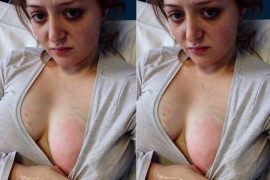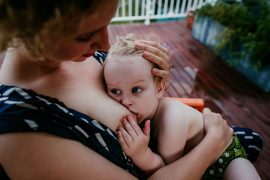To do so, the researchers collected human milk carbohydrates, also called oligosaccharides, from a number of different donor samples and profiled them with a mass spectrometry technique that can identify thousands of large biomolecules simultaneously. Then they added the compounds to strep cultures and observed the result under the microscope. This showed that not only do some of these oligosaccharides kill the bacteria directly but some also physically break down the biofilms that the bacteria form to protect themselves.
They found that the sugars from one sample nearly killed an entire strep colony.
In a pilot study, Townsend’s lab collected five samples. They found that the sugars from one sample nearly killed an entire strep colony. In another sample, the sugars were moderately effective while the remaining three samples exhibited a lower level of activity. In a follow-up study, they are testing more than two dozen additional samples. So far, two broke down the bacterial biofilms and killed the bacteria, four broke down the biofilms but did not kill the bacteria and two killed the bacteria without breaking down the biofilms.
“Our results show that these sugars have a one-two punch,” said Townsend. “First, they sensitize the target bacteria and then they kill them. Biologist sometimes call this ‘synthetic lethality’ and there is a major push to develop new antimicrobial drugs with this capability.”
By dosing strep cultures with a mixture of milk sugars and antimicrobial peptides from human saliva, the researchers also showed that the sugars’ ability to break down biofilms can also enhance the effectiveness of the other antimicrobial agents that breast milk contains.
In follow-up studies the team has also shown that the milk sugars’ antimicrobial activity extends to a number of other infectious bacteria, including two of the six “ESKAPE” pathogens that are the leading cause of hospital infections worldwide.
Townsend is collaborating with colleagues in Vanderbilt’s Mass Spectrometry Research Center to identify the specific types of carbohydrate molecules responsible for the antibacterial effects they have discovered.
Also contributing to the research were School of Medicine Fellow Ryan Doster, Associate Professor of Pediatrics Jörn-Hendrick Weitkamp, Associate Professor of Pathology, Microbiology & Immunology David Aronoff and Assistant Professor of Medicine Jennifer Gaddy.
The research was supported by the Department of Veterans Affairs grant CDA-2 1IK2BX001701, National Institutes of Health grants T32A1007474-20 and 2T32HD060554-06A2, National Center for Research Resources grant UL1 RR024975-01, National Center for Advancing Translational Sciences grant 2 UL1 TR000445-06 and the Vanderbilt Institute of Chemical Biology.
Republished with permission from David Salisbury for Vanderbilt University.










